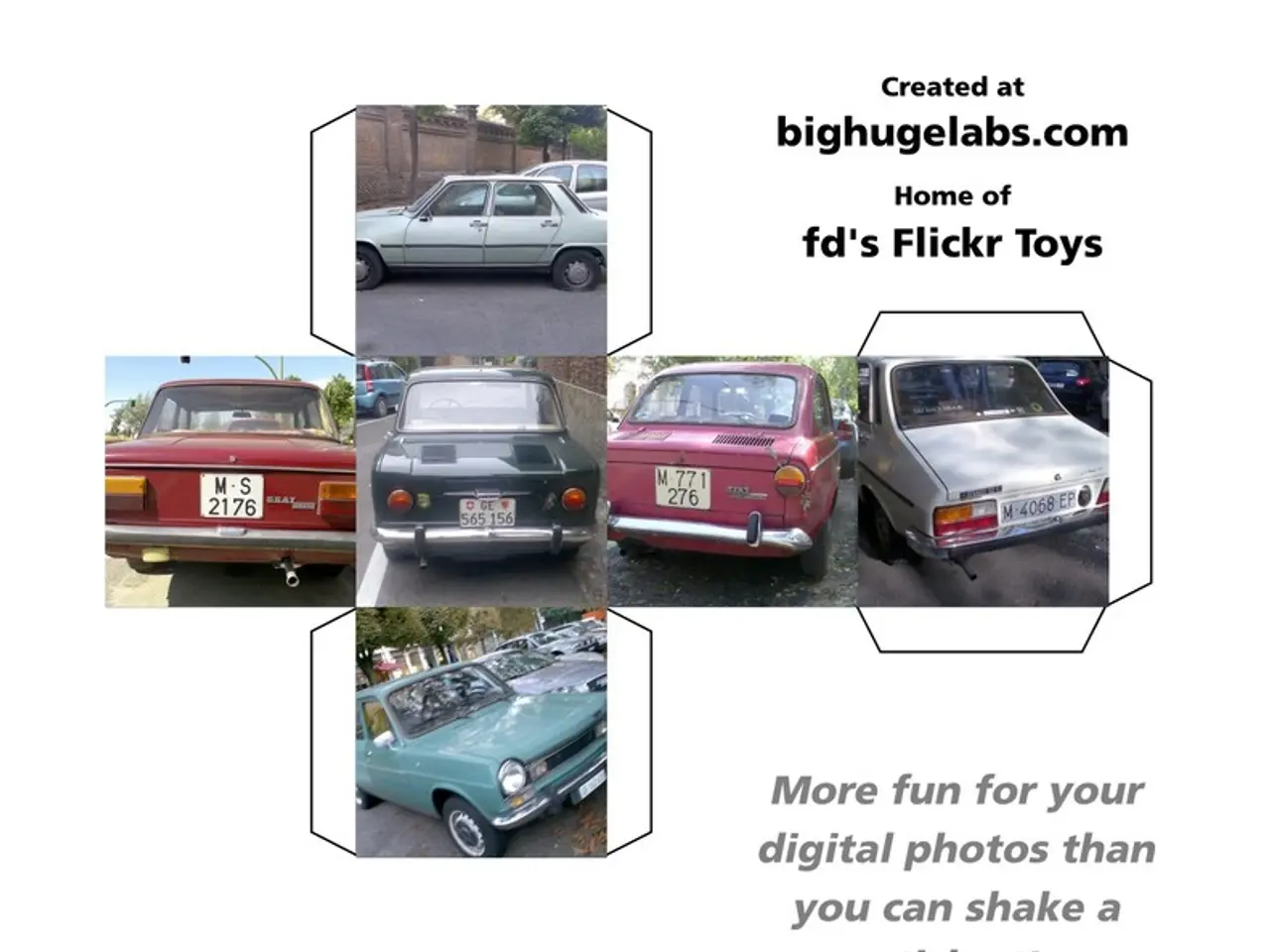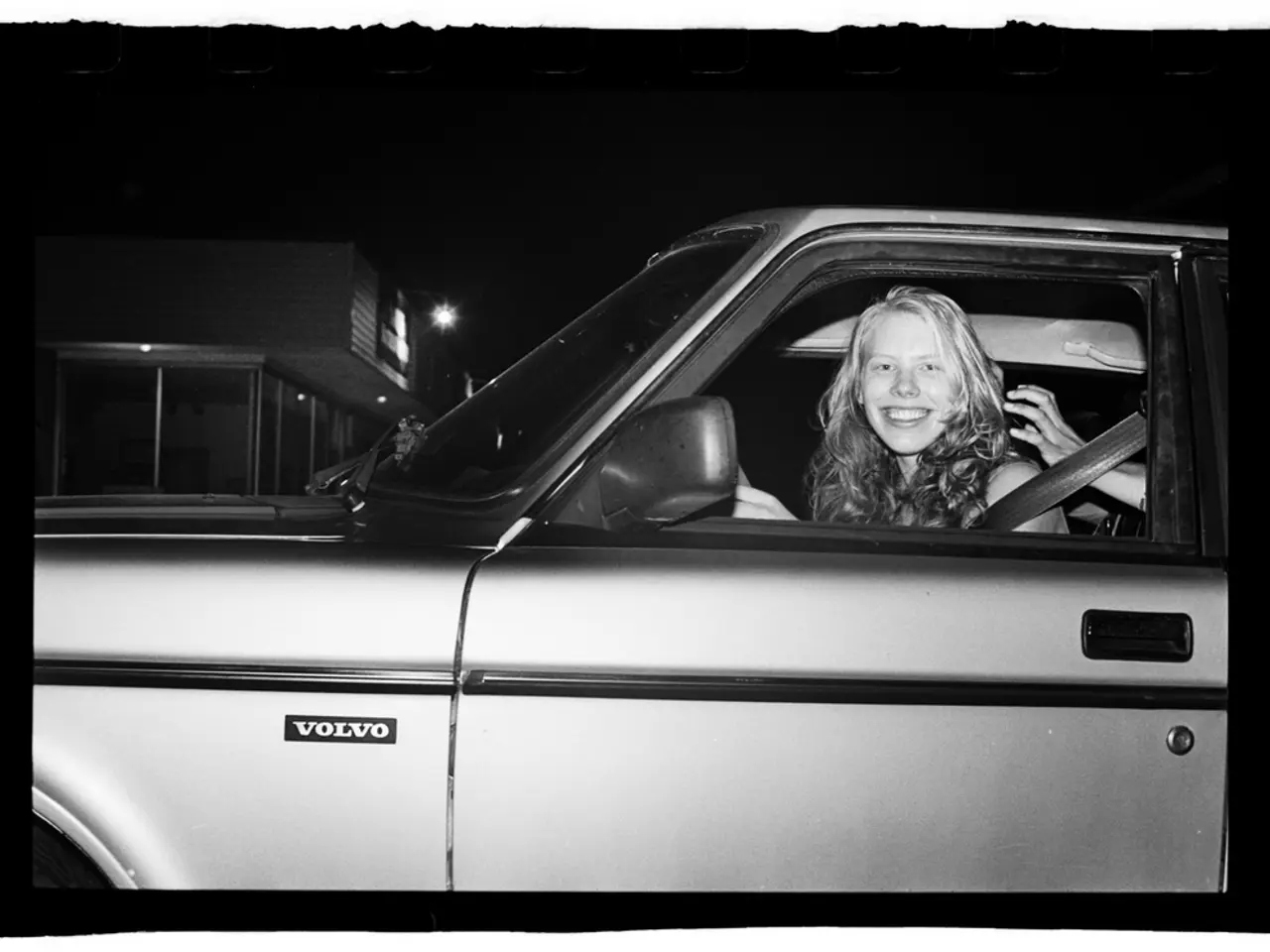Elon Musk's Driverless Ride-Sharing Venture, Tesla Robotaxis: An Overview of Its Key Details
In a groundbreaking move, Tesla, the leading electric vehicle manufacturer, initiated a pilot launch of its robotaxi service in Austin, Texas on June 22, 2025. The service, which allows users to book rides via a dedicated Tesla app at a flat fee, marks a significant milestone in Tesla's Full Self-Driving (FSD) program[1].
The initial deployment involved 10 to 20 driverless Model Y robotaxis operating in a geofenced area, with front-seat safety monitors present during the trial phase[2][3]. This limited rollout is a stepping stone towards Tesla's ambitious goal of scaling the service to a global robotaxi fleet by 2026, including a nationwide presence across the United States[4].
However, the timeline for this ambitious expansion is tentative and subject to change, depending on safety evaluations and regulatory approval. Elon Musk, Tesla's CEO, has emphasized caution, describing the launch date as "tentative" and noting that they are "super paranoid about safety," which could delay the wider rollout if issues arise[2][3].
Regulatory scrutiny and technical challenges also pose significant hurdles in the expansion of the robotaxi service beyond Austin[4]. The service relies on Tesla-owned Model 3 sedans and Model Y SUVs equipped with the company's new "unsupervised" Full Self-Driving (FSD) software, currently in testing[4].
The safety of both the general public and Tesla passengers is a top priority for the company, given the concerns surrounding self-driving car manufacturers and accidents over the years[5]. More than 35 states have enacted some form of driverless car legislation, with some states like California, Florida, and Arizona allowing self-driving cars on public roads[6].
Tesla's robotaxi service is part of a larger trend in the robotaxi industry, with companies like Google's Waymo and Amazon's Zoox also expanding their driverless fleets[6]. The EU AI Act, governing the development, deployment, and use of artificial intelligence within the European Union, will likely have a significant impact on the autonomous vehicle industry, as many AI systems used in these vehicles fall under the act's "high-risk" category[7].
China, being a "gigantic market" for Tesla, poses a challenge due to U.S. regulations that prohibit the company from training its software within China, making a safe deployment of unsupervised FSD there difficult[7]. Europe, however, presents a potential market for Tesla's robotaxi service, with plans for expansion in May 2026, but Musk anticipates dealing with a "mountain of paperwork" due to strict regulations[7].
President Donald Trump's plans to relax current rules around the technology, with new bipartisan legislation in the works to establish new federal guidelines, could potentially accelerate the industry's expansion[7]. The Senate has also approved Trump's pick for Secretary of Transportation, Sean Duffy, who plans to craft "clear regulations that balance safety, innovation, and cutting-edge technology," specifically mentioning autonomous vehicles, drones, and eVTOLs[7].
In summary, Tesla's robotaxi service offers fully autonomous rides on demand, starting in Austin, Texas, with plans for nationwide and international expansion by the end of 2026. The rollout of the service is gradual, with the company testing the waters before expanding to a larger fleet. While the service aims to make roads safer by reducing human error, it cannot eliminate the risk completely[8]. Tesla is using Chinese street videos pulled from the internet to teach its system about local street signs, traffic rules, and bus lanes[8].
Sources: [1] Tesla (2025). Tesla launches robotaxi service in Austin, Texas. Retrieved from https://www.tesla.com/news/tesla-launches-robotaxi-service-in-austin-texas [2] Musk, E. (2025). Tesla robotaxi service: Caution and safety first. Retrieved from https://www.elonmusk.com/tesla-robotaxi-service-caution-and-safety-first [3] Reuters (2025). Tesla robotaxi service: Safety concerns delay wider rollout. Retrieved from https://www.reuters.com/business/autos-transportation/tesla-robotaxi-service-safety-concerns-delay-wider-rollout-2025-06-25/ [4] CNBC (2025). Tesla's ambitious plan for a global robotaxi fleet by 2026. Retrieved from https://www.cnbc.com/2025/06/22/tesla-aims-to-scale-robotaxi-service-to-global-fleet-by-2026.html [5] Wired (2025). Tesla robotaxi service: Safety concerns and the road ahead. Retrieved from https://www.wired.com/story/tesla-robotaxi-service-safety-concerns-and-the-road-ahead/ [6] TechCrunch (2025). Tesla robotaxi service expands to California, joins industry trend. Retrieved from https://techcrunch.com/2025/09/15/tesla-robotaxi-service-expands-to-california-joins-industry-trend/ [7] Bloomberg (2025). EU AI Act and its impact on the autonomous vehicle industry. Retrieved from https://www.bloomberg.com/news/articles/2025-10-01/eu-ai-act-to-have-significant-impact-on-autonomous-vehicle-industry [8] The Verge (2025). Tesla robotaxi service aims to reduce human error, but can't eliminate risk completely. Retrieved from https://www.theverge.com/2025/12/01/tesla-robotaxi-service-aims-to-reduce-human-error-but-cant-eliminate-risk-completely
- The robotaxi industry, including Tesla, Google's Waymo, and Amazon's Zoix, is exploring potential opportunities in the finance sector for funding and technological advancements in self-driving vehicles.
- As Tesla expands its robotaxi service beyond Austin, it will face regulatory challenges in various industries such as transportation and technology, particularly in Europe and China, where specific rules and regulations must be adhered to for safe deployment.




